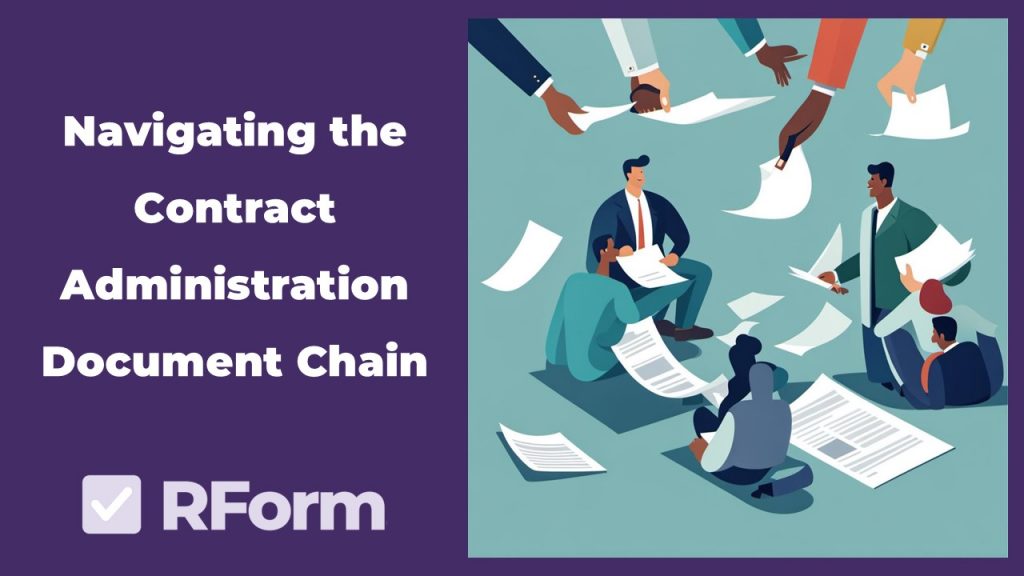
Effective Contract Administration management hinges on clear communication and meticulous documentation. These interconnected documents orchestrate the flow of information, ensuring everyone is on the same page. From RFIs that clarify project details to Change Orders that manage inevitable modifications, each document plays a crucial role in maintaining project momentum and ensuring successful delivery.
Foundational Documents:
- Submittals and Transmittals: Essential for tracking and confirming the exchange of information and materials.
- Request for Information (RFI): A critical process for clarifying and resolving uncertainties that arise during construction.
- Changes and Cash Allowances: Manage financial aspects and modify the original contract terms.
- Project Files and Document Management: A robust system for organizing and retrieving project-related documentation.
- Schedule of Values and Certificates for Payment: Ensuring that payment processes are transparent and aligned with project progress.
- Supplemental Instructions: Provide additional guidance and directives as the project evolves.
- Site Reports: Offers a centralized platform for tracking real-time data, facilitating collaboration, and ensuring we’re always on top of deadlines and milestones.
Here’s a breakdown of how the foundational documents interact with each other, drawing references from the construction industry practices and RForm’s offerings:
1. Submittals and Transmittals:
- Interaction with RFI: Submittals often respond to RFIs, providing necessary information or clarifications regarding materials, equipment, or procedures. Transmittals track the formal exchange of these submittals.
- Interaction with Changes and Cash Allowances: Changes in design or materials, often triggered by RFIs or submittals, may necessitate changes to the contract, leading to Change Orders and potentially impacting Cash Allowances.
- Interaction with Project Files and Document Management: Submittals and transmittals are critical project documents that must be organized and stored within the document management system for easy access and reference.
2. Request for Information (RFI):
- Interaction with Submittals: RFIs often initiate the submittal process, seeking information or clarification that will be provided through a formal submittal.
- Interaction with Changes and Cash Allowances: RFIs, by highlighting ambiguities or conflicts in the contract documents, can lead to changes in the scope of work, impacting the budget and potentially requiring cash allowances.
- Interaction with Supplemental Instructions: Responses to RFIs that require procedure changes or specifications may be formalized through Supplemental Instructions.
- Interaction with Site Reports: RFIs might be triggered by observations or issues noted in site reports, and their resolutions might be documented in subsequent site reports.
3. Changes and Cash Allowances:
- Interaction with Submittals and Transmittals: Changes in materials or design, often resulting from RFIs or submittals, are documented through Change Orders, which may require new submittals.
- Interaction with Schedule of Values and Certificates for Payment: Change Orders directly impact the Schedule of Values, leading to adjustments in payment applications and Certificates for Payment.
- Interaction with Project Files and Document Management: Change Orders and related documentation are crucial project records that must be managed and stored effectively.
4. Project Files and Document Management:
- Interaction with all other documents: This system is the central repository for all project-related documentation, including submittals, transmittals, RFIs, change orders, site reports, and more. It ensures efficient organization, retrieval, and information sharing among project stakeholders.
5. Schedule of Values and Certificates for Payment:
- Interaction with Changes and Cash Allowances: The Schedule of Values outlines the project’s cost breakdown, and any changes through Change Orders will necessitate adjustments to this schedule, impacting subsequent Certificates for Payment.
- Interaction with Site Reports: Site reports document work progress and provide evidence for evaluating payment applications and issuing Certificates for Payment.
6. Supplemental Instructions:
- Interaction with RFI: Responses to RFIs that require procedural or specification changes might be issued as Supplemental Instructions.
- Interaction with Site Reports: Supplemental Instructions may be generated in response to site conditions or issues identified in site reports.
7. Site Reports:
- Interaction with RFI: Observations and issues noted in site reports may trigger RFIs seeking clarification or resolution.
- Interaction with Schedule of Values and Certificates for Payment: Site reports document progress and contribute to the assessment of completed work for payment purposes.
- Interaction with Supplemental Instructions: Site conditions or issues may necessitate the issuance of Supplemental Instructions to guide further work.
These documents form an interconnected web, facilitating communication, tracking progress, managing changes, and ensuring successful project delivery. Efficient document management and clear communication channels are vital for navigating this complex interplay and maintaining project control.
Conclusion: As we’ve seen, the construction process is underpinned by a network of interconnected documents, each serving a vital purpose in maintaining project flow and facilitating clear communication among stakeholders. From initiating inquiries with RFIs to documenting progress through Site Reports, these documents together weave a narrative of the project’s evolution. Like those offered by RForm, a robust document management system becomes the central nervous system, ensuring efficient organization, access, and sharing of this critical information. By understanding these document interactions, construction professionals can navigate complexities, anticipate challenges, and ultimately deliver projects that meet or exceed client expectations.
If you would like to understand the interactions of these forms consider attending a RForm Demo: Choose a Date

